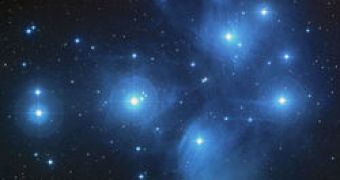Scientists studying what could be called the archeology of a supernova have concluded that our Sun has been born in a cluster of many stars. When a supernova explodes, short-lived radioactive isotopes are created. Bits of this radioactive material mix with nebular gas and dust that eventually condenses into new stars and planets.
Although these radioactive atoms are nowhere to be found today, scientists can trace the atoms that result from their decay. Astronomy professors Leslie W. Looney and Brian D. Fields, and undergraduate student John J. from the University of Illinois at Urbana-Champaign analyzed the presence of such "daughter" atoms in meteorites. By examining the abundances of those daughter species, the researchers managed to calculate how far away the supernova was, in both distance and time.
They found that it happened billion years ago when our sun was still forming. Moreover, "the supernova was stunningly close; much closer to the sun than any star is today," Fields said. "Our solar system was still in the process of forming when the supernova occurred."
According to Fields, the supernova appeared in a cluster of hundreds or maybe even thousands of low-mass stars like the Sun. Since then, these stars have dispersed across the sky.
However, astronomers say that this is not very unusual as most stars form in clusters.
"We know that the majority of stars in our galaxy were born in star clusters," Looney said. "Now we also know that the newborn solar system not only arose in such a cluster, but also survived the impact of an exploding star. This suggests that planetary systems are impressively rugged, and may be common even in the most tumultuous stellar nurseries."

 14 DAY TRIAL //
14 DAY TRIAL //